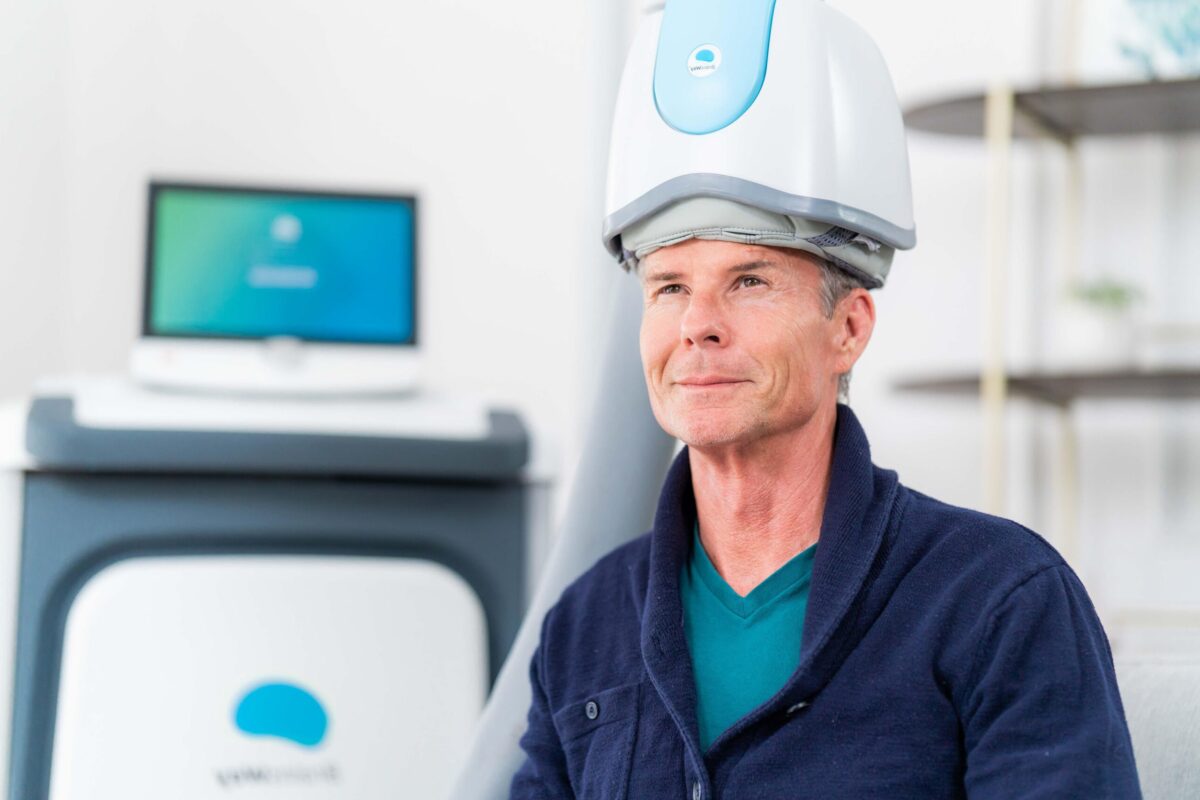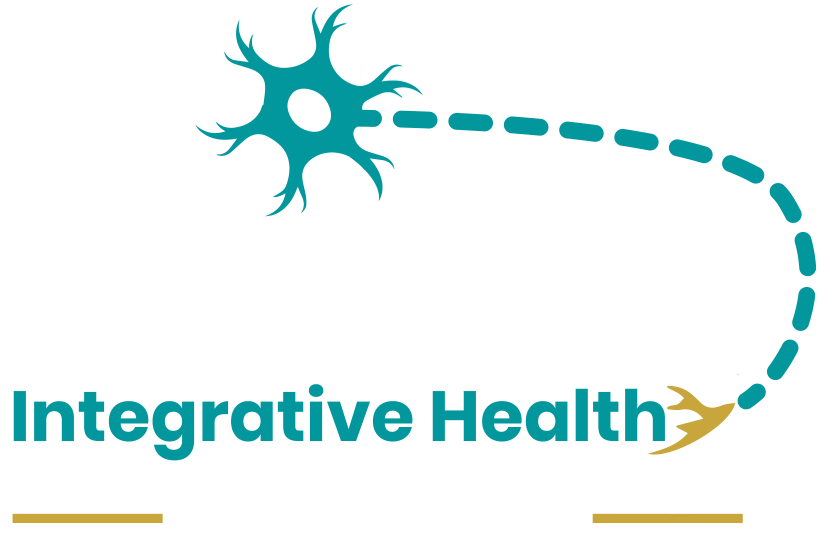Areas of the Brain
Frontal Lobe
What it does:
The frontal lobes are part of the cerebral cortex and are the largest of the brain’s structures. They are the main site of the so-called “higher” cognitive functions such as Executive Control, Planning, Strategizing, Socializing, Problem-Solving, Attention, and Emotion control. The frontal lobes contain a number of important substructures, including prefrontal cortex, orbitofrontal cortex, premotor, frontal eye fields, and brocas speech area (expressing your communication.)
Dysfunctions can lead to:
Mood and Personality Changes
- Lack of emotional regulation
- Impulsivity
- Attention deficit
- Anxiety
- Depression
- Impatience
- Loss of social acuity
- Loss of expressing language
- Stuttering on words
Movement Changes
- Spasticity
- Ataxia
- Lack of coordination
- Dysphasia
- Dyssynergia (lack of smooth coordinated/planned movement)
Parietal Lobe
What it does:
The parietal cortex plays an important role in integrating information from different senses to build a coherent picture of the world (your sensorium and neuraxis). Think of it as the “great associator” allowing for perception and integration of touch, pressure, pain, and temperature, number representation, auditory inputs, and visuospatial processing. This allows us to coordinate proper movements or social outputs in response to the object in our sensorium. It contains a number of distinct reference maps of your body called a homunculus, which is somatotopically arranged, and constantly updated as we move and interact with our neuraxis. Our Sensory and Motor Cortices are located here as well.
Dysfunctions can lead to:
UnderActivity
- Difficulty discriminating sensory Input
- Difficulty processing sensory inputs
- Difficultly integrating sensory input and delivering proper response
- Disorientation
- Lack of Coordination
- Inability to locate objects and recognize objects, events, and body parts (hemineglect)
HyperActivity
- Seizures
- Muscle spaspms
- Attention deficit
- Movement disorders
- Perseverative thoughts
- Chronic Pain
Temporal Lobe
What it does:
The temporal lobe contains a large number of substructures, whose functions include perception of auditory, visual, and aromatic inputs, face recognition, object recognitions, memory acquisition, and learning, positional GPS/mapping of your environment, Wernicke’s (understanding/receiving language), and emotional recations. Damage to this lobe can result in neurological deficits called agnosias, which refer to the inability to recognize specific categories (body parts, colors, faces, music, and smells).
Dysfunctions can lead to:
UnderActivity
- Difficulty in understanding language (aphasia, prosopagnosia, agnosia)
- Inability to attend sensory input
- Persistent talking
- Long and short term memory loss
- Increased or decreased sexual interest
Hyperactivity
- Dysautonomia
- Auditory hallucinations
- Seizures
- Flashbacks
- Dejavu
- Nightmares
Occipital Lobe
What it does:
The occipital cortex is the primary visual processor of the brain. It receives projections from the retina (via the thalamus; aka grand central station of sensation) and encodes different information such as color, orientation, motion, and texture. Data is then transferred to the parietal and temporal lobes and processed consciously. The dorsal stream processes to the parietal lobe for where objects are located. The ventral stream processes to the temporal lobe for what objects are.
Dysfunctions can lead to:
UnderActivity
- Cortical blindness
- Inability to see color
- Motion or orientation
- Inability to recognize faces or places
Hyperactivity
- Hallucinations
- Synethesia
MidBrain
What it does:
The mesencephalon is the uppermost dysfunction or damage to the section of the brainstem. Its associated functions are sympathetic nervous system inputs, eye movements, pupillary function, autonomic control, motor coordination, and pain modulation. It can be broken into two functions parts: visual and auditory information processing (tectum) and motor coordination (tegmentum). Also located in the midbrain are oculomotor (eye movement) nuclei that control how and where our eyes move and the input that is received substantia nigra (part of the basal ganglia) which is the house of dopamine metabolism, and the Periaqueductal Gray Matter which modulates pain and temperature inputs before they reach the brain. The PAG releases endogenous opioids that are 10x more powerful than fentanyl.
Dysfunctions can lead to:
UnderActivity
- Parkinson disease
- pain syndromes
- light and sound sensitivity
- dysautonomia
HyperActivity
- Anxiety
- Restlessness
- Anger
- Stress
- Mood disturbances
- Inability to focus
- Insomnia
- Dysautonomia
Pons
What it does:
The Pons is in the brainstem between the midbrain and the medualla oblongata (brainstem), and in ventral to the cerebellum. The pons functions are: horizontal eye movements, regulations of movement, inhibition of fight-or-flight response, modulates midbrain activity, equilibrium and balance, chewing, swallowing, breathing, and hearing. This region of the brainstem includes neural pathways that conducts signals from the cortex and limbic system to the cerebellum and medulla, and tracts that carry sensory signals into the thalamus (grand central). The pons houses cranial Nerve nuclei (or the immediate relay stations) of trigeminal (pain and touch of the face), Abducens (lateral eye movement), Facial (motor output for face), and VestibuloCochlear (positional and motion inputs from your semicircular canals, and auditory inputs from your cochlea) as well as information about posture and balance.
Dysfunctions can lead to:
UnderActivity
- Increased flight-or-fight response
- Lack of facial symmetry
- Eye movement disorders
- Muscle weakness
- Anxiety
- Dizziness
- Vertigo
- Hearing deficits
Hyperactivity
- Chronic pain
- Lethargy
- Narcolepsy
- Dizziness
- Vertigo
- Nausea
- Fatigue
Brain Stem (Medula Oblongata)
What it does:
The Medulla Oblongata is the lowest part of the brainstem and is colloquially called “the brainstem”. This area essentially takes care of everything automatic; modulates breathing rate, monitors CO2 and blood oxygenation, modulates heart rate and blood pressure, controls blood flow by vasoconstrictions or dilation, monitors our autonomic nervous system, as well as continuously monitoring our position in space and delivering unconscious corrections to keep up upright and level (balance), and respond to erroneous stimuli (stepping on a sharp object, touching a hot stove, and retracting that limb).
Dysfunctions can lead to:
UnderActivity
- Poor oxygen concentrations
- Slow breath rate
- High blood pressure
- Dizziness
- Positional Orthostatic Tachycardia (POTS)
- Dysautonomia
- Raynaud’s syndrome (Some recent studies have also linked it to cognitive functioning, emotional control and regulation, and attention.)
- Clumsiness on one side of the body
- Weakness on one side of the body
- Motor Impairments one one side of the body
- Lack of gag reflex
- Trouble swallowing
Overactivity
- Fatigue
- orthostatic hypotension
- Dizziness
- Nausea
- Vertigo
- Dysregulation of coordinated movements
- Peripheral vascular deficiency
- Difficulty with eating and chewing
- Snoring
- Dysautonomia
Cerebellum
What it does:
Our vestibular nuclei, which receive inputs from our spinal cord, cerebellum, and semicircular canals and deliver outputs to our cortex, spinal cord, and cerebellum, are located here. It also houses Cranial Nerves 9, 10, 11, and 12 which control motor outputs to throat muscles, both taste sensation and motor outputs of your tongue, your gag reflex, ability to swallow/not aspirate, and motor outputs to some of your larger neck muscles. Not to mention, everything that is coming from our cortex has to pass through the medulla to get to the spinal cord and the rest of the body. The cerebellum monitors and regulates motor behavior helps learn complex motor sequences, coordinates voluntary movement, and regulates balance, and posture. The cerebellum is the seed of balance and coordinated movement. Along with the Basal Ganglia it makes up our ExtraPyramidal system (extra movement). This allows us to thread a needle, or pour a cup of coffee, with the accuracy, timing, smoothness, and correct amount needed. You can think of it like a movement filter for the Motor Cortex that only outputs vector (magnitude and velocity) movement. Some recent studies have also linked it to cognitive functioning and attention. Although the cerebellum is only 10% of the brain by weight, it contains more neurons than the rest of the brain combined. It has also been confirmed to be one of the only areas in mammalian brains to undergo full neurogenesis (the creation of new neurons).
Dysfunctions can lead to:
UnderActivity
- Loss of fine motor coordination and movements
- Tremors
- Ataxia (movement disoder)
- Inability to walk straight
- Clumsiness on one side of the body
- Dizziness
- Vertigo
- Slurred speech
- Nystagmus (corrective eye movements)
Hyperactivity
- Hallucinations
- Synethesia
Limbic System
What it does:
The Limbic system aka “the neanderthal brain” is a functional system of interconnected structures deep within the brain. It plays a large role in emotions, personality, learning, hunger, thirst, neurotransmitter release, hormone release, and memory formation. Some of the areas included in the limbic system are the amygdala, hippocampus, septal area, hypothalamus, and cingulate gyrus. The limbic system and the frontal lobe are intimately connected and almost entirely make up our personalities, emotion, and social acuity.
Dysfunctions can lead to:
UnderActivity
- Dementia
- Schizophrenia
- Bipolar disorder
- Autism spectrum
- Smell impairments
- Abnormal biological rhythms
- Memory impairments
Hyperactivity
- Anxiety disorders
- ADHD
- Epilepsy
- Uncontrolled emotions
- Anger and aggresion outburtsts
- Abnormal sexual bevior
- Personality change





